Contents of this page may be automatically translated, we take no responsibility for the accuracy of the translation. Feel free to contact our customer support centre if you have any questions.

Hydrographic networks can be designed as topological or geometric networks. The amount of data that Lantmäteriet has now built up makes it possible to construct both types. Below is a description of how the two types of networks are structured and work.
Topological network - according to Swedish water standards
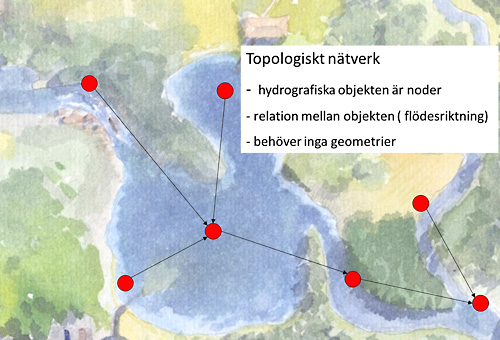
In a topological network, all bodies of water (ie lakes, streams, wetlands, etc.) can be part of the network. Each individual body of water then becomes a node in a node-link system. The links connect the water bodies. Each link keeps track of which node is the start and end node for the link. Figure 2 below shows how nodes and links are connected, and how a topological network can be stored using a link table in a database.
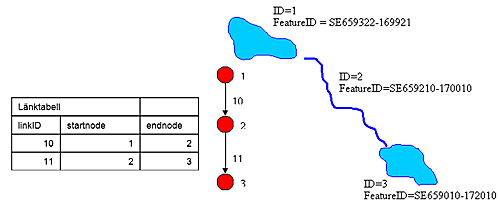
This type of network thus does not use any fictitious backbone line through lakes and watercourses. Geometries are not needed either, but it is the relative order of the objects that describes the network. Among other things, this makes it easier to show how a network is also connected to glaciers and wetlands and to show the connection between surface water and groundwater.
The topological network can both be used to connect objects to a network for to be able to follow the path of the water and the substances that are transported by or on the water, but also to describe different levels of detail. Level of detail means a hierarchy with a number of bodies of water in a network. Each level, except the finest that the data set allows, can be divided into additional components.
A node represents an object in a specific level of detail. The objects can have an internal structure, a finer level of detail. The internal structure is in turn a network consisting of nodes and links. This latter network inherits properties from the node that in an overlying level of detail constitutes the entire network, see Figure 3. If you want to increase the level of detail, this is done by expanding the node with the objects that lie in the node's internal structure.
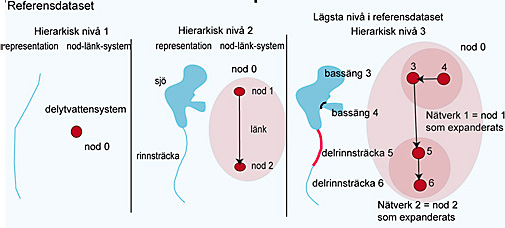
Geometric network - according to Inspire
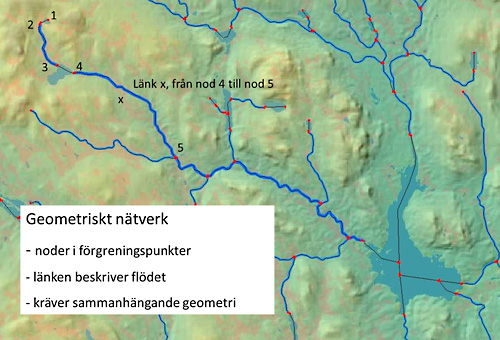
The geometric network presupposes a coherent geometry, ie there must be no "gaps" between lakes and watercourses or between parts of watercourses. Through lakes and wide watercourses that are represented as a surface (and not as a line), a backbone line must be created. The body line and watercourses that are represented as a line become the links in the network. The nodes are created in the branch points.
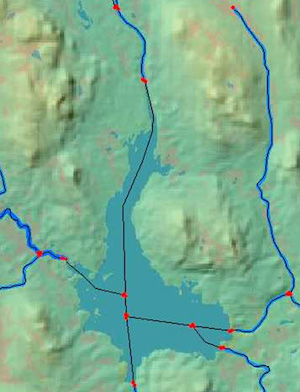
A geometric network can be relatively easily translated into a topological network.
However, it is not possible to show correlation between levels of detail with a geometric network. It is also more difficult to show the connection between surface water and groundwater.

